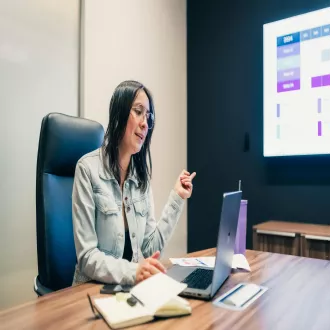Transcription The Power of Open-Ended Questions to Foster Dialogue
The difference between closed and open-ended questions
In communication, not all questions are the same. The fundamental difference is between closed and open-ended questions.
A closed-ended question is one that limits the answer to one or two words, such as "yes," "no," a date or a number.
They are designed to confirm specific facts, but close the door to further conversation.
In contrast, an open-ended question is one that cannot be answered with a simple "yes" or "no".
These questions, which often begin with "What...?", "How...?" or "Why...?", invite the interlocutor to reflect, to elaborate on his or her answer and to express him or herself freely, thus encouraging a true dialogue rather than a simple exchange of data.
How to use open-ended questions to avoid conflict and open up communication
Open-ended questions are a strategic tool for managing potentially conflictive situations, as they keep the channels of communication open.
In a tense moment, a closed-ended question such as "Are you upset?" is risky, because a monosyllabic answer can completely block the conversation.
A much more constructive approach is to use an open-ended question that invites the other person to share his or her perspective.
For example, if you notice that a colleague has become distant, instead of asking if there's a problem, you might say, "How can I help you?" or "What's going on?"
This type of question encourages expression and allows you to uncover the unspoken need or the real cause of the frustration, opening a path toward understanding and resolving the conflict rather than shutting it down.
Powerful questions for professional development: "How can I help you?"
There is one open-ended question that, used on a regular basis, can have a transformative impact on professional development: "How can I best help you in your work?"
Whether directed at a superior, a team member or a customer, this question demonstrates a proactive attitude and a focus on service.
In the work environment, we all have a "customer" whose satisfaction is key to our success.
By asking this question, we stop assuming what their priorities are and ensure that we are investing our time and effort in the tasks that truly bring value to that person and, by extension, to the organization.
This simple question eliminates the guesswork and prevents the frustration of working hard
the power of open ended questions to foster dialogue




